Potrebujeme váš súhlas na využitie jednotlivých dát, aby sa vám okrem iného mohli ukazovať informácie týkajúce sa vašich záujmov. Súhlas udelíte kliknutím na tlačidlo „OK“.
ASTM D7742-11
Standard Practice for Determination of Nonylphenol Polyethoxylates (NPnEO, 3 <= n <= 18) and Octylphenol Polyethoxylates (OPnEO, 2 <= n <= n <= 12 in Water by Single Reaction Monitoring (SRM) Liquid Chromatography/ Tandem Mass Spe
Automaticky preložený názov:
Štandardná prax pre stanovenie nonylfenolu polyethoxyláty (NPnEO, 3 ≤ n ≤ 18 rokov), a oktylfenol polyethoxyláty (opne, 2 ≤ n ≤ n ≤ 12 vo vode jednej reakcii monitoring (SRM), kvapalinová chromatografia / tandemové hmotnostnej Spe
NORMA vydaná dňa 15.6.2011
Informácie o norme:
Označenie normy: ASTM D7742-11
Poznámka: NEPLATNÁ
Dátum vydania normy: 15.6.2011
Kód tovaru: NS-39048
Počet strán: 12
Približná hmotnosť: 36 g (0.08 libier)
Krajina: Americká technická norma
Kategória: Technické normy ASTM
Kategórie - podobné normy:
Anotácia textu normy ASTM D7742-11 :
Keywords:
Alkylphenols , Ethoxylates, Liquid Chromatography, Mass Spectrometry, ICS Number Code 71.100.40 (Surface active agents)
Doplňujúce informácie
| Significance and Use | ||||||||||||||||||||||||||||||||||||||||||||||||||||||||||||||
|
This Practice has been developed in support of the US EPA Office of Water, Office of Science and Technology by the Chicago Regional Laboratory (CRL). Nonylphenol (NP) and Octylphenol (OP) have been shown to have toxic effects in aquatic organisms. The prominent source of NP and OP is from common commercial surfactants which are longer chain APEOs. The most widely used surfactant is nonylphenol polyethoxylate (NPnEO) which has an average ethoxylate chain length of nine. The APEOs are readily biodegraded to form NP1EO, NP2EO, nonylphenol carboxylate (NPEC) and NP. NP will also biodegrade, but may be released into environmental waters directly at trace levels. This Practice screens for the longer chain APEOs which may enter the STP at elevated levels and may cause a STP to violate its permitted discharge concentration of nonylphenol. |
||||||||||||||||||||||||||||||||||||||||||||||||||||||||||||||
| 1. Scope | ||||||||||||||||||||||||||||||||||||||||||||||||||||||||||||||
|
1.1 This procedure covers the determination of nonylphenol polyethoxylates (NPnEO, 3 ≤ n ≤ 18) and octylphenol polyethoxylates (OPnEO, 2 ≤ n ≤ 12) in water by Single Reaction Monitoring (SRM) Liquid Chromatography/ Tandem Mass Spectrometry (LC/MS/MS) using direct injection liquid chromatography (LC) and detected with tandem mass spectrometry (MS/MS) detection. This is a screening Practice with qualified quantitative data to check for the presence of longer chain ethoxylates in a water sample. 1.1.1 All data are qualified because neat standards of each alkylphenol ethoxylate (APEO) are not available and the synthesis and characterization of these neat standards would be very expensive. The Igepal® Brand standards, which contain a mixture of various chain lengths of the alkylphenol ethoxylates (APEOs), were used. The mixture was characterized in-house assuming the instrument response at an optimum electrospray ionization cone and collision voltage for each APEO was the same. This assumption, which may not be accurate, is used to determine qualified amounts of each ethoxylate in the standards. The n-Nonylphenol diethoxylate (n- NP2EO) surrogate was available as a neat characterized standard, therefore, this concentration and recovery data was not estimated. APEOs are not regulated by the EPA, but nonylphenol, a breakdown product of NPnEOs, is regulated for fresh and saltwater dischargers. A request by a sewage treatment plant (STP) was made to make this Practice available through ASTM in order to screen for the influent or effluent from sources of APEOs coming into the STP. The interest lies in stopping the source of the longer chain APEOs from entering the STP in order to meet effluent guidelines. Based upon the above, this is a Practice rather than a Standard Method. A comparison between samples is possible using this Practice to determine which has a higher concentration of APEOs. 1.2 Units—The values stated in SI units are to be regarded as standard. No other units of measurement are included in this standard. 1.3 The estimated screening range shown in Table 1 was calculated from the concentration of the Level 1 and 7 calibration standards shown in Table 4. These numbers are qualified, as explained in Section 1, and must be reported as such. Figs. 1-5 show the SRM chromatograms of each analyte at the Level 1 concentration with the signal to noise (S/N) ratio. This is a screening Practice and method detection limits are not given. The S/N ratio for each analyte at the Level 1 concentration must be at least 5:1 for adequate sensitivity. If the instrument can not meet the criteria, the screening limit must be raised to an acceptable level. 1.4 This standard does not purport to address all of the safety concerns, if any, associated with its use. It is the responsibility of the user of this standard to establish appropriate safety and health practices and determine the applicability of regulatory limitations prior to use. TABLE 1 Estimated Screening Range
|
||||||||||||||||||||||||||||||||||||||||||||||||||||||||||||||
| 2. Referenced Documents | ||||||||||||||||||||||||||||||||||||||||||||||||||||||||||||||
|
Podobné normy:
Historická
1.8.2014
Historická
1.3.2008
Historická
26.5.1989
Historická
1.1.2014
Historická
1.10.2009
Historická
1.1.2014
Odporúčame:
EviZak - všetky zákony vrátane ich evidencie na jednom mieste
Poskytovanie aktuálnych informácií o legislatívnych predpisoch vyhlásených v Zbierke zákonov od roku 1945.
Aktualizácia 2x v mesiaci !
Chcete vedieť viac informácii ? Pozrite sa na túto stránku.


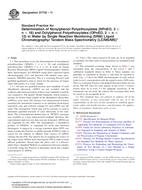
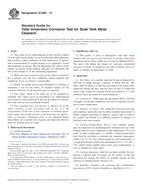 ASTM D1280-14
ASTM D1280-14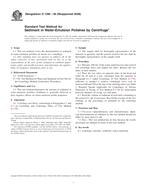 ASTM D1290-95(2008)..
ASTM D1290-95(2008).. ASTM D1331-11
ASTM D1331-11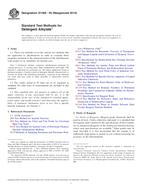 ASTM D1569-05(2014)..
ASTM D1569-05(2014)..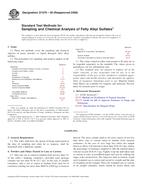 ASTM D1570-95(2009)..
ASTM D1570-95(2009)..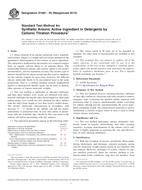 ASTM D1681-05(2014)..
ASTM D1681-05(2014)..
 Cookies
Cookies
